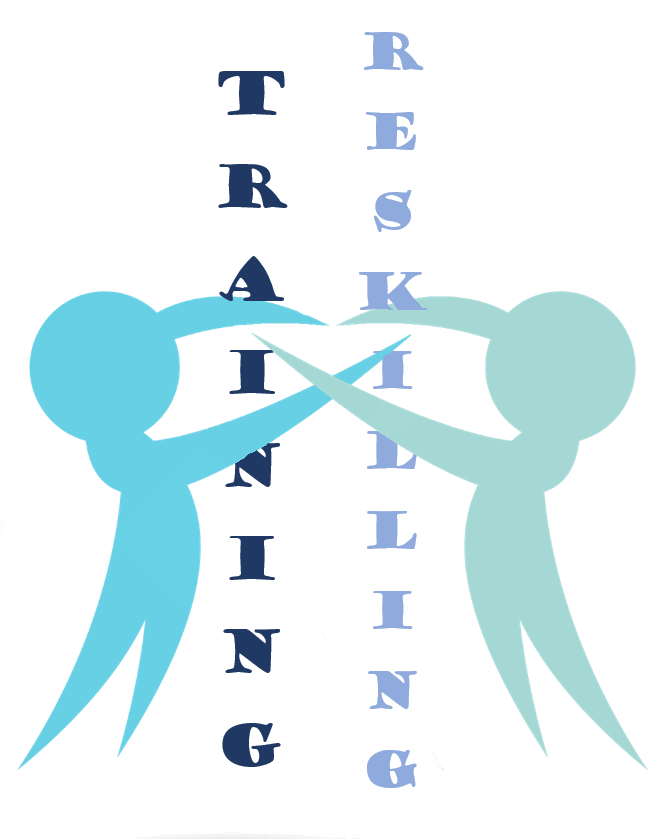Worries about future job sustainability continue to make headlines as automation and artificial intelligence take on more tasks in factories, office spaces, construction sites, and other work places. Some prime age workers, feeling they have no place in this new technology-based world, have simply dropped out of the workforce. Shelly Hagan (@shellykhagan) reports, “Men in their prime working years have left the labor force at an astonishing rate and they may never return if the state of the U.S. job market holds.”[1] In a 2017 study, Didem Tuzemen, an economist at the Kansas City Fed, indicated the “decline in demand for middle-skilled work — a phenomenon dubbed ‘job polarization,’ because more positions are concentrated at the higher and lower ends — has played a role in keeping prime-age men out of the job market.”[2] According the Tuzemen, “Middle-skilled jobs are those that often involve routine tasks and are procedural or rule-based, making them easier to automate. … The men who have left the work force are unlikely to return if labor conditions remain the same, possibly due to a lack of available jobs suitable for their skill set.” Although it remains uncertain whether these drop-outs can ever be enticed back into the workplace, offering them training to develop the skills they need to upgrade their employment potential could play a role. In fact, today’s workers, as well as those who have yet to enter the workplace, must be persuaded their employment status requires them to embrace life-long learning and remain open to constant training and re-skilling.
The case for life-long learning
Pavel Luksha (remain), founder of Global Education Futures (GEF), along with other education experts, believes some, if not most, of the basic skill sets discussed below must mastered for employees to remain relevant in the workplace.[3] They are:
- Management and knowledge work skills. These skills involve complex problem solving using dynamic collective intelligence (i.e., both human and artificial intelligence).
- Lifelong learning skills. These skills involve lifelong personal development of both body and mind.
- Service skills. According to Luksha and his colleagues, new service skills are required to create “unique human experiences through personal connection (empathy/bonding) and creativity.”
- Twenty-first century literacy skills. These skills include things like coding, information management, and other STEM-related skills. Among the most important skills, according to the GEF team, will be those associated with new urban jobs necessary to sustain green, healthy, distributed, and connected cities.
- Tech management skills. It should come as no surprise a technology-based workplace requires tech management skills (i.e., design, coordination, and maintenance of complex technical environments).
For me, the most important of those skill sets is lifelong learning. A person willing to learn throughout their life can develop all the other desirable skills. Luksha notes, “Education is not about getting a professional skill, it is about living through your life. … You need to learn how to learn.” Tom Vander Ark (@tvanderark), CEO of Getting Smart, notes, “GEF imagines lifelong learning happening everywhere across cities not just schools and universities with communities of interest creating venues of learning around shared interests. Augmented reality will convert any space into a learning place. City navigators will connect people to place-based education opportunities.”[4] To the list of places needing to foster lifelong learning you must add the workplace.
Sanjay Srivastava (@Srivastava_SNJ), chief digital officer at Genpact, notes, “The transformative potential of artificial intelligence for smarter, faster operations is no secret. As more implementations roll out across businesses, AI will present a paradigm shift to what constitutes ‘work,’ which has long been defined by the manual processing of exceptions, or the last-mile problems, that automation could not address. But AI and automation will not eliminate people from the picture. Far from it, since technology only solves half of the equation. We will need people with domain knowledge of their industry and business processes to add context to digital applications and guide desired business outcomes. Such human-and-machine collaboration is what will define the next generation of work.”[5] The workers required to perform the work discussed by Srivastava must be trained and that training is likely to take place on the job.
Training and re-skilling in the workplace
Srivastava insists, “We must start planning — across education and talent acquisition — to reskill existing employees in materializing the benefits at the intersection of domain and digital.” I’m assuming he includes on-the-job training when he talks about education. However, getting employees to accept training and re-skilling might not be easy. The fact so many prime-aged workers have already stopped looking for work is testament to that fact. Nevertheless, the Economist notes, “[One skill that] increasingly matters in finding and keeping a job is the ability to keep learning. When technology is changing in unpredictable ways, and jobs are hybridizing, humans need to be able to pick up new skills.”[6] Employees can encourage lifelong learning by providing on-the-job training. The Economist asserts, “Employers often balk at training staff because they might leave for rivals, taking their expensively gained skills with them.” However, Gail Jackson, United Technologies’ vice-president of human resources, told the magazine, “We want people who are intellectually curious. It is better to train and have them leave than not to train and have them stay.” The magazine concludes one of the most important things an employer can do to foster lifelong learning is to help make them more curious about the world around them.
More traditional approaches, like apprenticeships, are also making a comeback. Michael P. Collins, President of MPC Management, writes, “I think it is fair to say that American companies rushed to invest in automation, but did not make a similar commitment or investment in the training needed to operate, maintain, troubleshoot, and repair all of the automation they purchased.”[7] He concludes, “Corporations need to bite the bullet and invest in long-term apprentice training that will give maintenance people all of the skills to operate maintain, troubleshoot and repair the automation.” Arnd Herwig, Vice President of engineering at Brose North America, states, “Apprenticeship programs that combine theoretical knowledge with hands-on training and mentoring demonstrates to employees that we care about them and their career path.”[8] Such programs are not cheap; but, they can help both today’s and tomorrow’s workers become lifelong learners. Since the future workplace is most likely going to be one in which human/machine collaboration is the norm, Srivastava insists managers will also need to be trained and re-skilled. “Managing this hybrid workforce,” he writes, “is very different from managing people alone. We will need to implement new structures and processes for effective management and ensuring successful change. … The time to start thinking about managing a hybrid workforce is now, not tomorrow.”
Concluding thoughts
I am optimistic about a future in which humans and smart machines collaborate in the workplace. To help achieve this future, all stakeholders (educators, employers, governments, and employees) need to embrace lifelong learning as a way of life and of doing business. The continuous need for training and re-skilling is about as certain as anything we can predict about the future.
Footnotes
[1] Shelly Hagan, “Prime-Age Men May Never Return to US Workforce, Fed Paper Says,” IndustryWeek, 26 February 2018.
[2] Ibid.
[3] Tom Vander Ark, “Learning for Life: New Skills for New Jobs,” Getting Smart, 30 August 2016.
[4] Ibid.
[5] Sanjay Srivastava, “Now is the time to start training tomorrow’s digital workforce,” Information Management, 22 October 2018.
[6] Staff, “What employers can do to encourage their workers to retrain,” The Economist, 12 January 2017.
[7] Michael P. Collins, “Why Automation Needs Apprenticeships,” IndustryWeek, 27 November 2018.
[8] Adrienne Selko, “How Apprenticeships Bridge the Skills Gap,” IndustryWeek, 20 February 2019.





